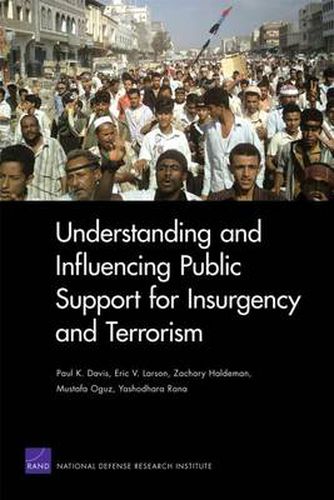Readings Newsletter
Become a Readings Member to make your shopping experience even easier.
Sign in or sign up for free!
You’re not far away from qualifying for FREE standard shipping within Australia
You’ve qualified for FREE standard shipping within Australia
The cart is loading…






Building on earlier RAND research that reviewed and integrated social science relevant to understanding terrorism and counterterrorism, this volume focuses on public support for both insurgency and terrorism and incorporates insights stimulated by social movement theory. The authors examine four case studies: al-Qa'ida’s transnational jihadist movement, the Taliban insurgency in Afghanistan, the Kurdistan Workers’ Party (PKK) in Turkey, and the Maoist insurgency in Nepal. The authors first developed a model, based on previous work, identifying the factors that influence public support for insurgency and terrorism and how these factors relate to each other. They then drew on extensive primary - and secondary-source material from each of the four case studies to evaluate and refine the model. Comparing the four case studies, the authors discuss which factors were most salient across cases and how their importance varied in each case. Finally, they offer a model of persuasive communications that connects the study’s research to issues of strategy and policy.
$9.00 standard shipping within Australia
FREE standard shipping within Australia for orders over $100.00
Express & International shipping calculated at checkout
Stock availability can be subject to change without notice. We recommend calling the shop or contacting our online team to check availability of low stock items. Please see our Shopping Online page for more details.
Building on earlier RAND research that reviewed and integrated social science relevant to understanding terrorism and counterterrorism, this volume focuses on public support for both insurgency and terrorism and incorporates insights stimulated by social movement theory. The authors examine four case studies: al-Qa'ida’s transnational jihadist movement, the Taliban insurgency in Afghanistan, the Kurdistan Workers’ Party (PKK) in Turkey, and the Maoist insurgency in Nepal. The authors first developed a model, based on previous work, identifying the factors that influence public support for insurgency and terrorism and how these factors relate to each other. They then drew on extensive primary - and secondary-source material from each of the four case studies to evaluate and refine the model. Comparing the four case studies, the authors discuss which factors were most salient across cases and how their importance varied in each case. Finally, they offer a model of persuasive communications that connects the study’s research to issues of strategy and policy.